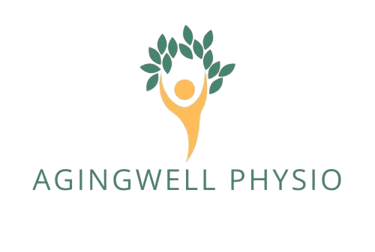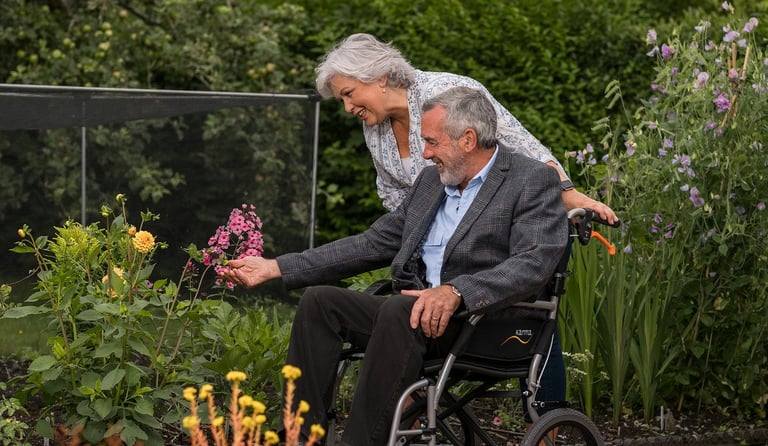Top 5 Ways To Stay Strong and Mobile While Aging
Check out the top 5 ways to stay strong and mobile while you age. You can build strength even into your 10th decade of life! AgingWell Physio can help you start.
Kelly K Veit, DPT
4/15/20254 min read
Often it takes a family or friend visit to realize that a senior living alone is starting to decline physically. Signs of weakness don’t just show up one morning (unless it’s a medical emergency!) and it's likely that a person is not going to admit they have trouble getting off the couch or can’t carry the laundry across the house. These little moments of struggle are red flags for what can potentially become a life changing situation. If weakness is encouraged to persist then eventually that person is going to need in-home help or move to a senior living facility. Let’s stop that decline before it reaches that point.
These are the top 5 things you can do to stay strong and mobile while aging.
First check in with your doc. At your annual physical tell them that you are starting to struggle at home or in the community. Make sure that nothing else is wrong! Complete a review of your medications and make sure that nothing is reacting with each other. Polypharmacy is a serious concern with older adults and your reaction to medications can change as you age even if you've been taking it for years. Have your vitals checked, blood work drawn, and a quick cognitive screen. It’s great to have a baseline so you know what you’re working with. Once everything is deemed to be normal, it’s time to get started!
Think about what your goal is. Not your family, friends, or others. But what YOU would like to be able to do over the next 6 months, year, or 5+years. Picture what you want to be able to do physically. Maybe you want to go out to lunch multiple times a week. Or walk to church. Or travel on a special trip. It might even be to walk to the mailbox daily. Big or small there is no right or wrong answer to your goal. Acknowledge that your current physical condition will not get you there and it’s time to improve. It will be hard work, but achieving the goal you set for yourself will be worth it.
Let’s be honest. Starting a new exercise program in your 60’s, 70’s, 80’s, even 90's + is not the same as when you were in your twenties. This is the time to ease your way into it. Hitting it hard and causing pain/soreness is not a positive way to want to keep exercising. If you’ve never exercised before this is where working with a trained professional is necessary to prevent injury. If you have exercised, think about what you have done in the past and return to that program, but at a lower level. It is possible to build strength even into your 10th decade of life. A good program for older adults focuses on endurance fitness, flexibility/posture, strength training, and balance work. We use all of these throughout our daily lives and if one area declines, they all start to. The way to build strength and mobility is to do more than you normally would. If the movements you do during an exercise program start to become easier, then the activities you do throughout the day will start to feel easier. Your muscles need to be challenged and your movements need to be bigger than the normal. Do not be afraid of using weights or moving in ways you haven’t in awhile. Starting slow is the key and building as you go.
It’s time to increase your movement every day. Sitting on that couch for hours on end is not going to get you to your goal. A trick I tell new clients who have very limited activity is to get up and march in place during commercials. Work those legs and get your heart rate up even for 30 seconds. Try to add a few minutes of extra walking daily. Start with 5 minutes if need be. Or if you already are more active, add another 10 outside. Less sitting and more moving is the name of the game. Over doing it is not. So listen to your body. You know if you need breaks during the day and when you could honestly move a bit more. Sedentary lives are what cause weakness. It may have started with an illness or injury, but if you are cleared by your doc to start moving it’s time to push through that fatigue level and get up.
Consistency. You’ve worked hard starting a new exercise routine. You’ve stepped up your movement during each day. You were honest about your goal. There’s no one stopping you now except yourself. Maintenance is the hardest part of staying strong. If you stop using your body, you will start to lose it. It’s ok to take a break here and there, but it’s important to keep working at it. Create ways to keep the routine. Find a friend or partner that wants to workout with you. Join an exercise group for accountability. Continuously remind yourself of what your goal is. And when you reach that goal. Make a new one.
We're all capable of achieving amazing things, even when they seem difficult. Knowing your limits and getting the proper help are crucial for reaching your goals. If you or a loved one are an older adult seeking to enhance strength and mobility, AgingWell Physio can create a personalized program to help you achieve your objectives. Contact us today, and we'll meet you at your level to start your journey toward better health.
info@agingwellphysio.com
612-326-4110



